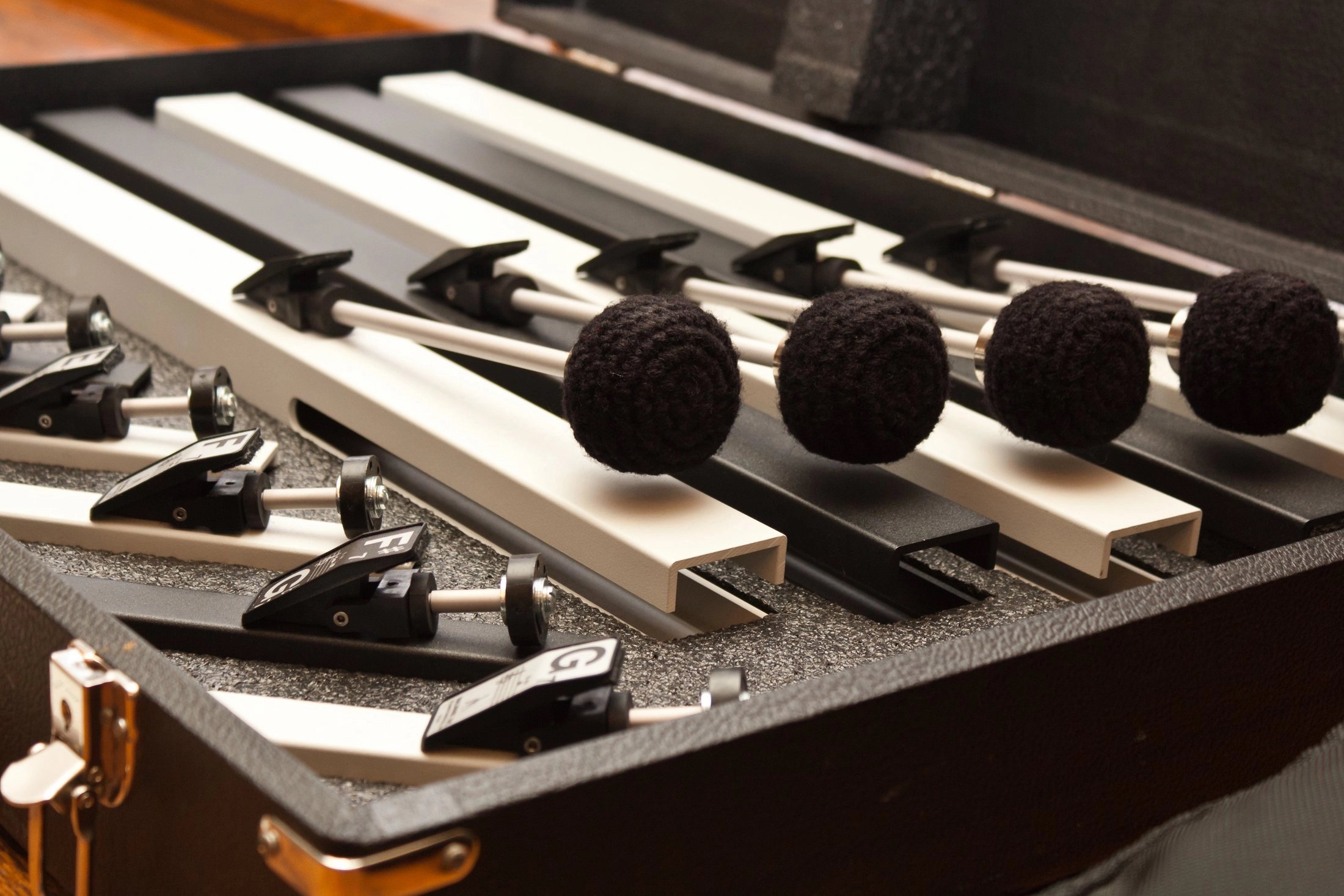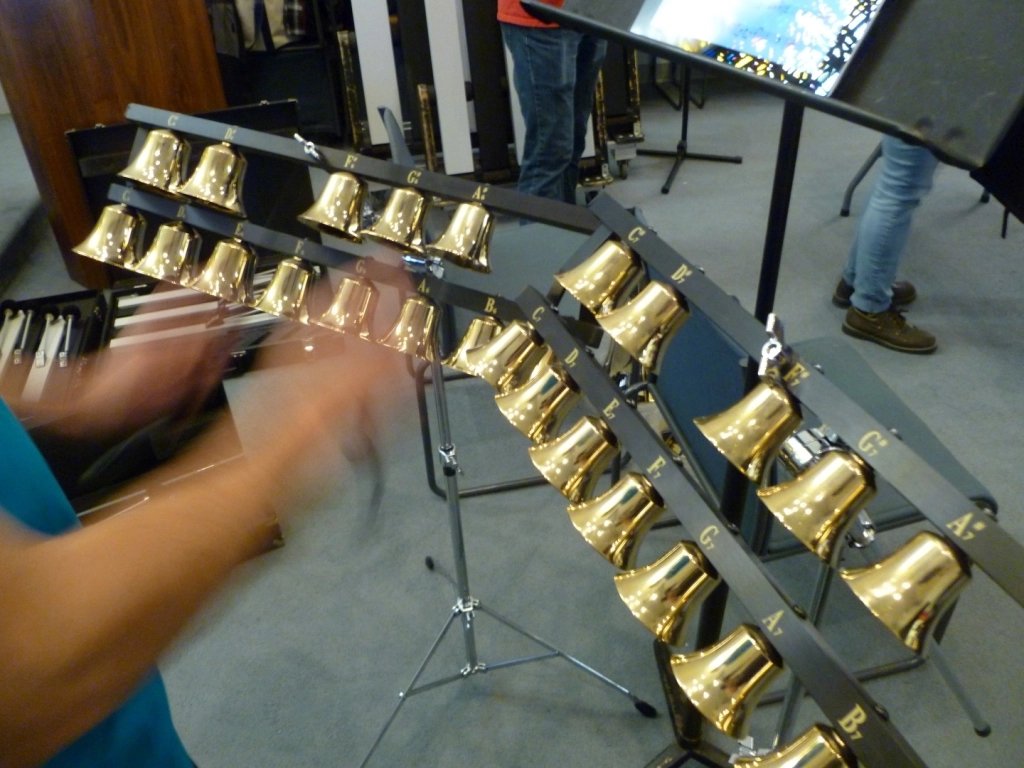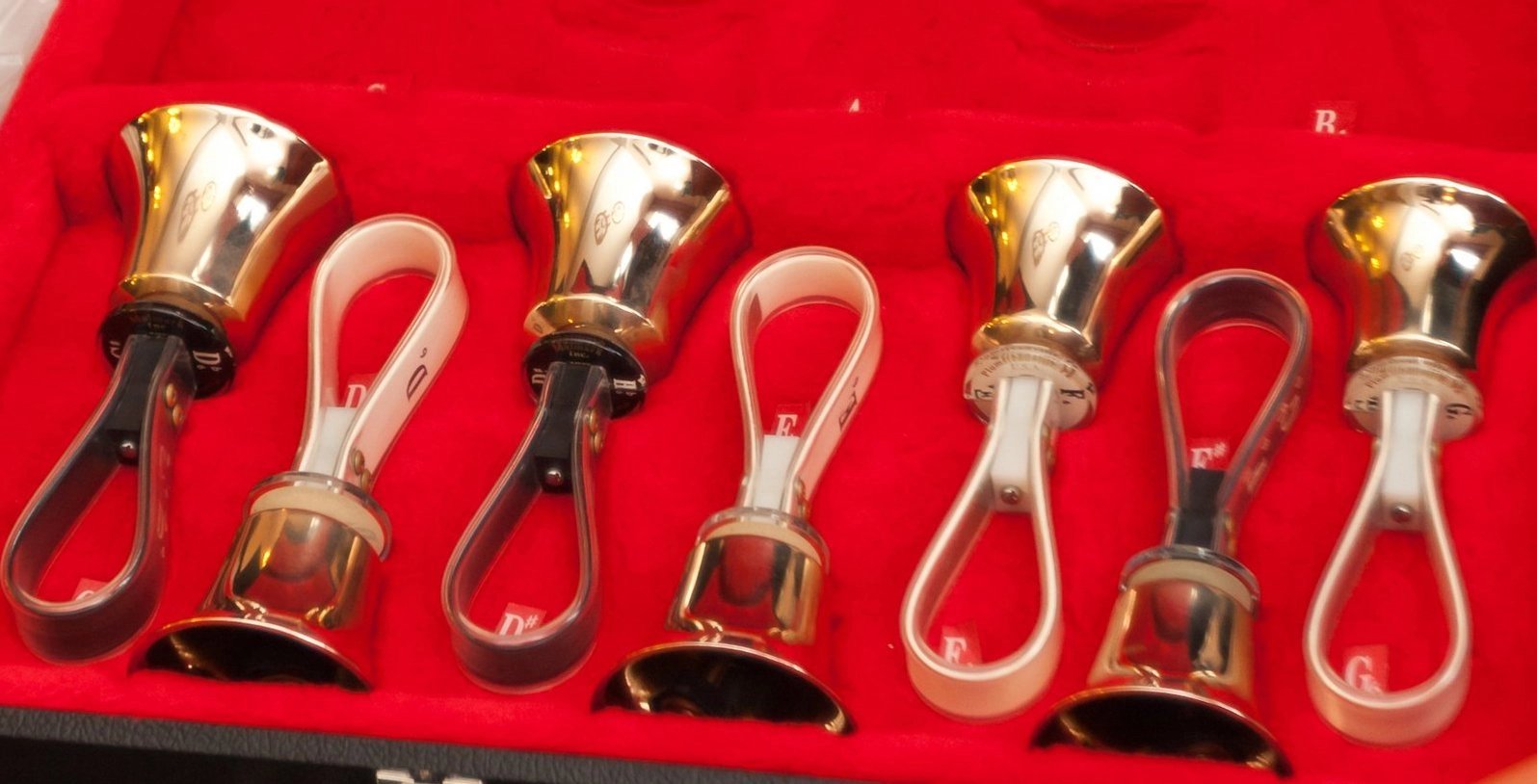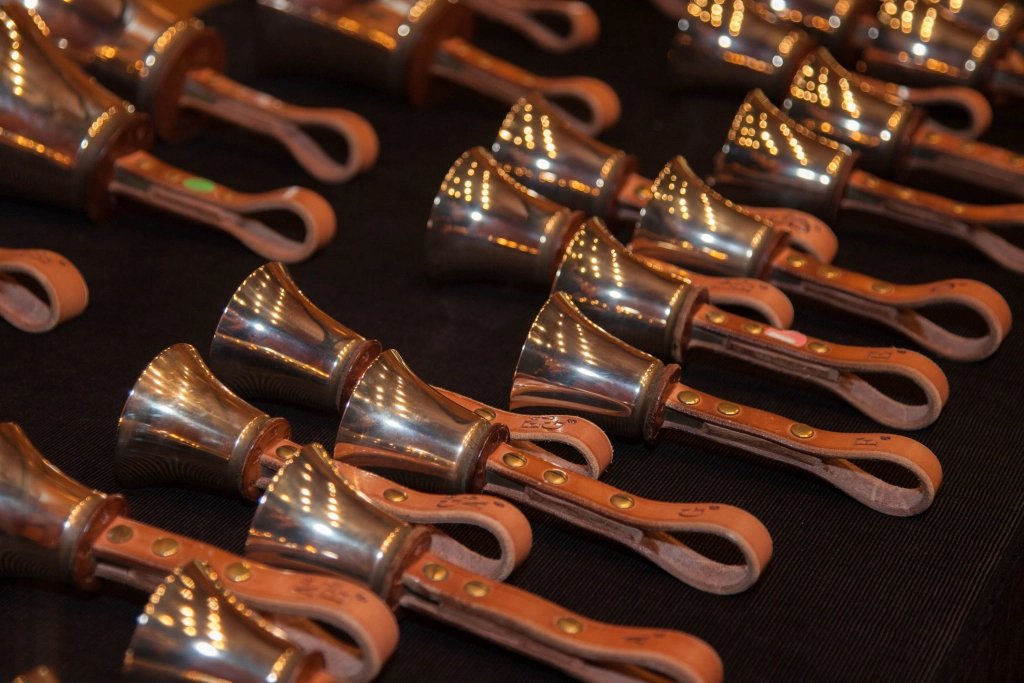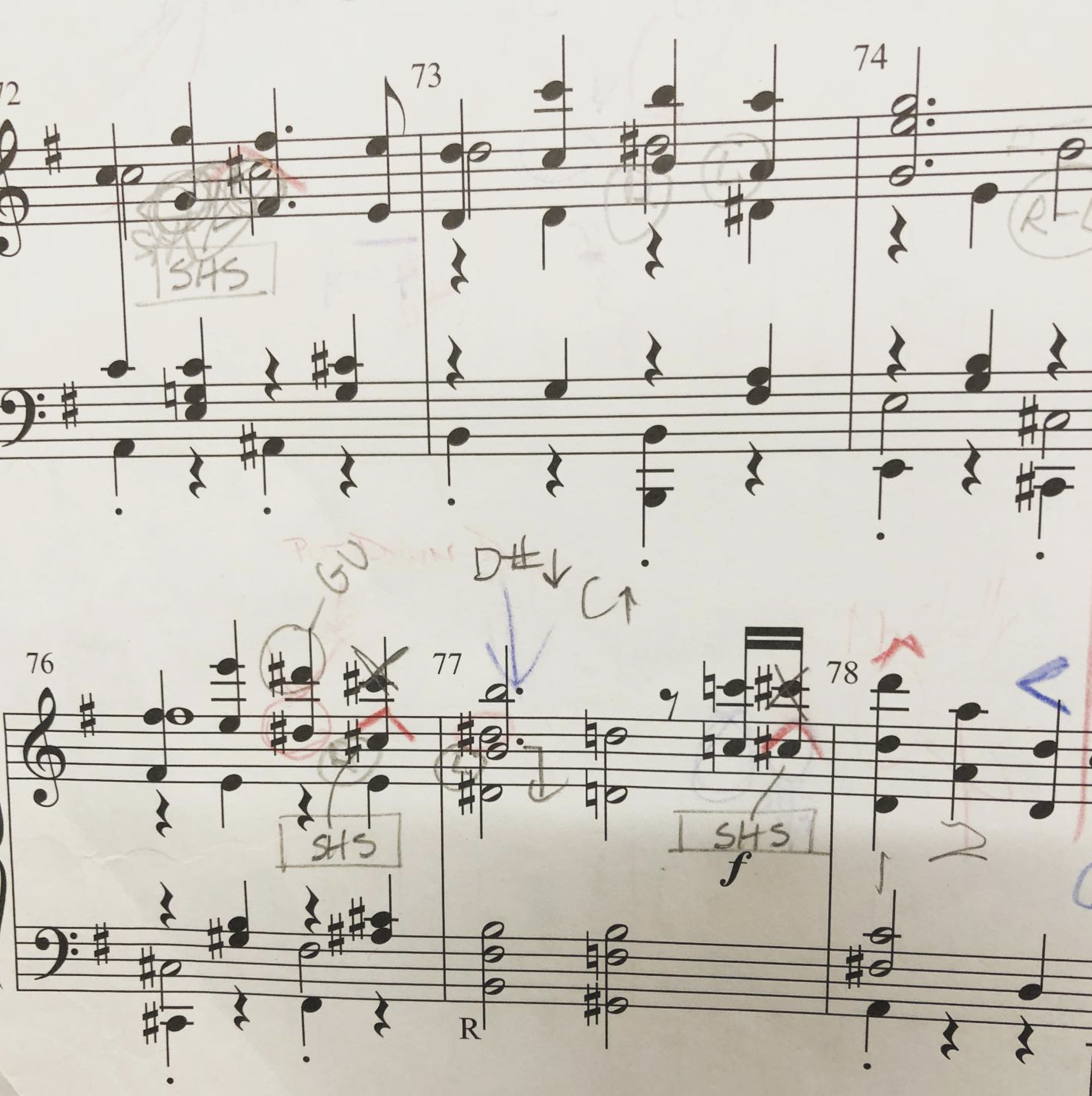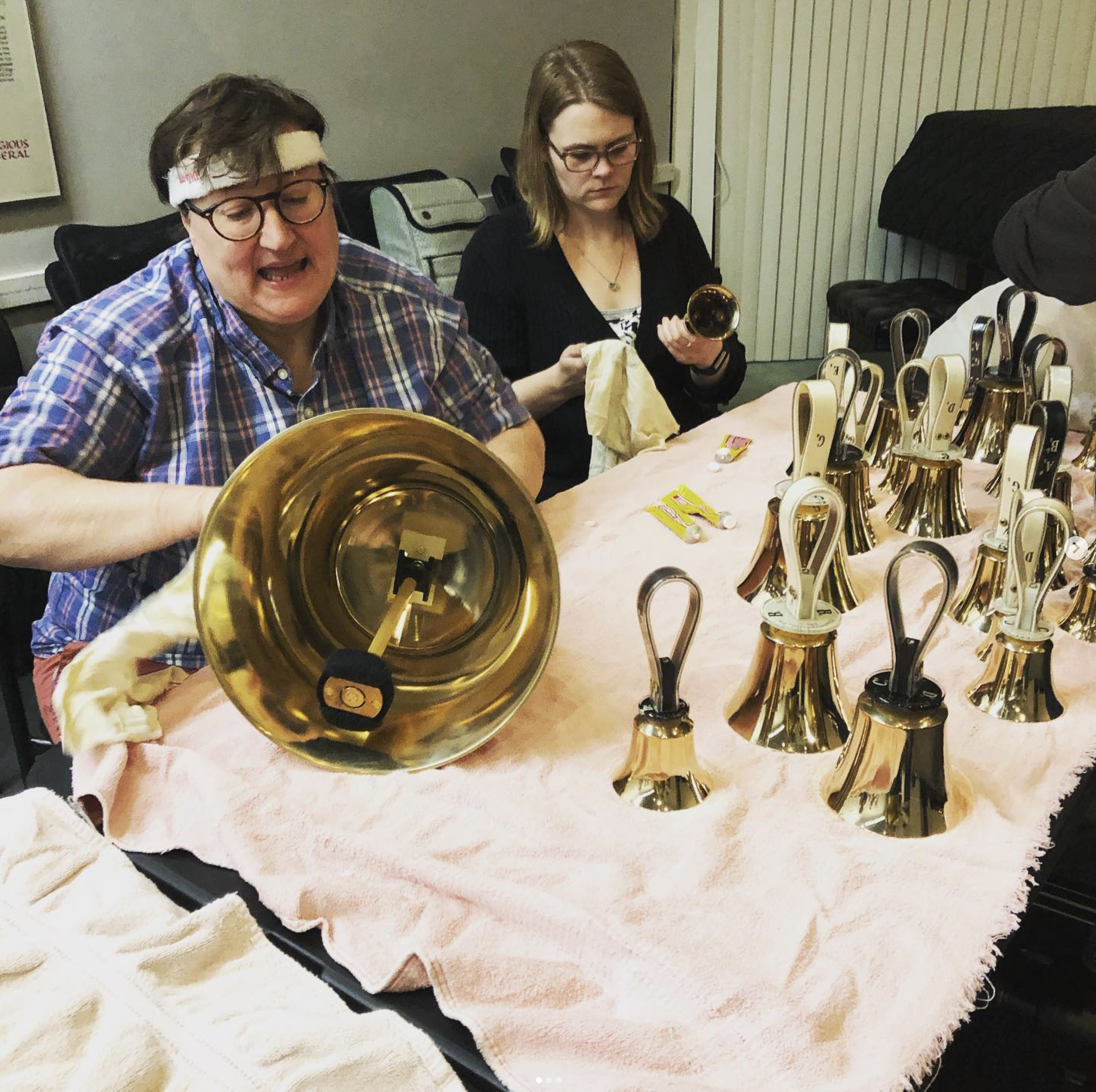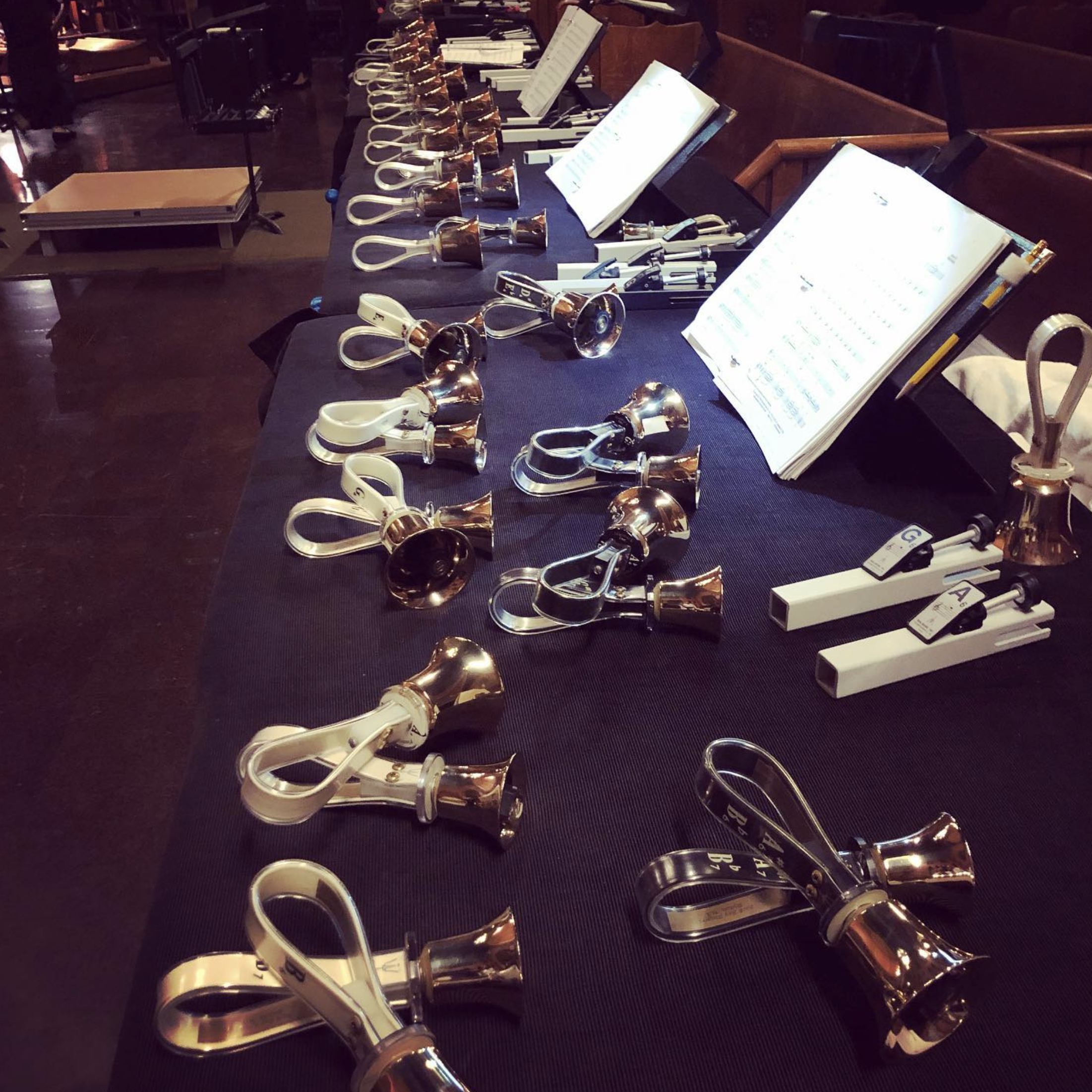Personal Touch. A Chat with Griff Gall.
Griff Gall is an elementary music and movement specialist in the town of Danvers, Mass. The founding artistic director of the Back Bay Ringers, Griff has presented workshops in handbell pedagogy, conducting, and Orff Schulwerk at local and national conferences, and is co-author of Ring, Dance, Play: First Experiences with Choirchimes® and Orff Schulwerk. He is the recipient of the Donna Nagel Award for his contributions to the field of General Music from the Massachusetts Music Educators Association and the Spotlight Award from the American Center for Elemental Music and Movement.
atac: Hi Griff. What’s your story? Where are you from and when did you ring your first bell?
Griff Gall: I was introduced to handbells as an undergraduate student at Westminster Choir College. The Westminster Concert Bell Choir plays on the world’s largest range of handbells, and is known for their musicality and precision. My freshman year, after hearing the ensemble play for our parents’ weekend, I knew that I wanted to learn more about the instrument. I joined the training ensemble for the spring semester and was accepted into the touring ensemble my sophomore year. I learned so much from Kathy Shaw, the conductor of the ensemble.
atac: How did you come to form Back Bay Ringers (BBR)?
GG: In 2003, I was approached by a friend with the idea of starting a bell choir dedicated to friends and members of the LGBTQIA+ community. We worked together to form Back Bay Ringers. At the time, I was conducting the handbell program at Trinity Church in Boston, I found the idea of starting a community ensemble exciting.
atac: That’d make this year the 20th anniversary. I imagine you’ve had a wide variety of players.
GG: Our 20th anniversary season will be celebrated during the 24/25 season. Over those twenty years, we have had over one hundred musicians performing with our touring choir and our previous training choir. The musicians in Back Bay Ringers all have previous handbell experience, and most also play other instruments from piano, violin, clarinet, or percussion. However, the majority of our members hold careers outside of music. We have engineers, architects, healthcare professionals and educators. Each musician brings their unique talents and personality to the ensemble.
Above, from top left to bottom right: Malmark Choirchimes, Malmark Cymbells, Malmark Handbells, Whitechapel Handbells.
atac: Back Bay Ringers have supported a variety of causes including LGBT Asylum Task Force, Boston Living Center, and Stop Handgun Violence. Could you speak on that a bit?
GG: We are very proud of our “Season of Giving Back” tradition for our spring season. BBR tries to partner with other organizations that share similar values for social justice, often with a focus on supporting the LGBTQIA+ community. This year, we are proud to partner with NAGLY, the North Shore Alliance of GLBTQ Youth. The benefit to our organization comes from knowing that we are helping to support other non-profit organizations, and partnering with them to help promote our concerts.
atac: I’m reading that the earliest archaeological evidence of bells (Yangshao people, China) dates from the 3rd millennium BC? That’s deep. More recently, artist Cory Arcangel debuted Hail Mary, a generative-score project for carillonneurs. What is it about bell music that’s rung true to humans for so long?
GG: Bells are a primitive sound that have held spiritual, healing, and aesthetic properties for centuries. Handbell ensembles, similar to Back Bay Ringers, are a relatively new phenomenon. It is believed that English Handbells (as our instrument is properly called) were developed in the 1600’s. They were primarily used for change ringing, and often used to practice the bell peels performed on tower bells. Of course, since they were tuned, logically people realized they could play tunes on the bells. By the mid 1700s many villages and towns in England had what they called “bell bands.” These bands were much like today’s bell choirs, playing folk tunes, and light classical works on multiple octaves of bells.
Above: From Back Bay Ringers’ instagram
atac: In the bell-music world, is there a divide between people who are into large hanging bells (Petersglocke, etc) vs. handbells? Or do you find bell-people tend to like all bells? As an outsider here, I’m trying to get a sense of the sub-scenes and micro classifications…
GG: The bell world is often divided between campanologist who often ring church tower bells, typically in the style of change ringing, and “tune ringers” or handbell musicians who perform music as an ensemble (or as a soloist.) The two styles are very different, but many people have a fascination with both forms of ringing. Years ago, I had the privilege of climbing the tower at the historic Old North Church for a lesson on tower ringing. It was incredible to climb into the tower and actually see those enormous bronze bells, and then to be taught how to properly pull the ropes to make them ring. Change ringing is a wonderful art, but my brain simply does not think that mathematically.
atac: In the handbell community, is Antia Ward a kind of folk hero, by chance?
GG: No comment : )
atac: Sorry, had to ask. The word ensemble is getting used a lot here, so let’s talk about the instrument itself. When we see a group of bells—is it actually considered one instrument?
GG: Back Bay Ringers perform on six and a half octaves of handbells. Our primary instrument was manufactured in Pennsylvania by the Malmark corporation. The majority of our bells are bronze, but our lowest bass bells are actually made of aluminum. These innovative bells are twice the size of their bronze counterparts, but less than half the weight. They also produce a stronger fundamental sound, which is great when the ensemble is ringing large chords. In addition to our Malmark bells, we have six octaves of Choirchimes, making the full range of our ensemble seven octaves. In 2011, BBR received a donation of three-octaves of Whitechapel Handbells, which after a restoration by the Whitechapel Foundry, are a beautiful addition to the ensemble. In a way, we own only three instruments, our Malmark handbell set, our Choirchimes, and our Whitechapel handbells. The ensemble must work with precision and musicality to create the performances we share with our audiences. I often describe a handbell ensemble as 17 people playing one piano. I can think of no other instrument that relies so heavily on a sense of community, trust, and team work as a handbell ensemble.
atac: That’s real! You mentioned Malmark of Pennsylvania and Whitechapel Foundry, but I gather Boston’s got a place in handbell history, too?
GG: Boston’s connection to handbells is not in manufacturing, but in the popularity of handbells in the United States. Tune ringing had primarily been something that was only heard on the Vaudevillian circuits, (P.T. Barnum famously took an English bell band, dressed them in Swedish traditional dress and called them Swiss Bell Ringers.) There were very few musicians exploring handbells in the early 1900s in the U.S.
Above, some bell images from Back Bay Ringers’ instagram
atac: What happened after the early 1900s?
Dr. Arthur Nichols was a prominent physician living in Boston’s Beacon Hill neighborhood. He had a strong interest in change ringing and was responsible for the restoration of many bell towers throughout New England and the United States. In the early 1920’s he and his daughter, Margaret Shurcliff traveled to England to explore change ringing. Margaret had no previous experience with ringing, but that trip ignited her lifelong passion for handbells. She became the first American woman to complete a peal in an English tower, and was awarded a small set of bells, which she brought back to Beacon Hill. It is said that if you met Margaret, she was likely to put a bell in your hand. Her family and friends formed an informal group called the Beacon Hill Ringers. She began the tradition of ringing carols on Christmas Eve on Beacon Hill, a tradition that still continues today. In fact, BBR will be honoring the 100th anniversary of the tradition in 2024 as we celebrate our 20th anniversary.
Margaret founded the New England Guild of English Handbell Ringers, an organization that grew into what is today called the Handbell Musicians of America.
atac: That’s fascinating. Had no idea. What’s your repertoire for this season look like?
GG: Each season, I try to frame the repertoire selection around a theme. This season’s theme is simply, classics. I love how the term classics can be viewed in many different ways. Certainly in music we often think of classical music, and we have several wonderful transcriptions of classical pieces from Handel to Brahms. I also thought about the idea of classics as it relates to our instrument. For many, handbells are frequently associated with church or sacred music, and we have two very different hymn tune arrangements to reflect on that connection. I also wanted to feature some original works for handbells. When pieces are written expressly for bells, there is a freedom for the composer. Generally speaking, the composer understands the instrument and can create works that highlight the natural qualities of the bells. The whole concert will really take the audience on a musical journey, and will feature many pieces that the audience will find familiar, even if they never expected to hear those familiar pieces on handbells!
*
Back Bay Ringers perform live at atac on Saturday June 3rd. Grab tickets here.



